Examples of flowers seen during six day on the Island of Pantelleria, Sicily. Top left: [Aizoaceae] Carpobrotus acinaciformis. Top right: [Cistaceae] Cistus criticus - rock rose. Bottom left: [Orchidaceae] Serapias cossyrensis - an endemic orchid. Bottom right: [Orobanchaceea] Orobanche sanguinea - broom rape.
Overview
The island of Pantelleria sits in the Mediterranean Sea, in the Strait of Sicily, a body of water between Sicily and the North African country of Tunisia; the island is 100 km (62 mi) southwest of Sicily and is closer to Tunisia than to Sicily. The island is part of the Sicilian province of Trapani.
We had the opportunity recently to visit this corner of Italy, and in this post, we’ll show a few of the plants we saw. For an overview of our time on the island, see our blog post Six Days on the Island of Pantelleria, Sicily.
Geology
Yes, this blog is supposed to be about the plants of Pantelleria, but we must talk about the lava because Pantelleria is all about the lava. Even if you are not a student of volcanism, you will at least walk away with this impression. After that impression though, it’s hard to understand what the volcanic history of the island is. After a bit of poking around, we found out that there are two major calderas that dominate Pantelleria: La Vecchia caldera and the Cinque Denti caldera. Montagna Grande, the highest point on the island, and its nearby little sister, Monte Gibele (an ancient crater), are contained within the Cinque Denti caldera. Monte Gibele and Montagna Grande are referred to as post-caldera shield volcanoes.
The Cinque Dente caldera overlaps the La Vecchia and is slightly more north and west. Both of these calderas date back to the late Pleistocene, also referred to colloquially as the Ice Age, an epoch which lasted from 2.6 million to 11,700 years ago. The Cinque Denti caldera formed about 45,000 years ago and the La Vecchia (which means “the old one”) formed about 114,000 years ago. The island itself was formed 220,000 years ago. So everything is still quite young.
Pantelleria sits in a northwest-southeast oriented trough near the collision between Africa and Europe tectonic plates. As explained by Tuff Guy (nice pun!): “Africa is currently crashing into Europe, but despite this the area around Pantelleria is extending. This is because Sicily is slowly rotating clockwise, and stretching the Sicily Channel. It is this stretching that causes the melting that feeds the volcano. This melting has lead [sic] to a couple of other submarine volcanoes in the region, including one of my favourites, Graham Bank.” The Tuff Guy site has a good explanation of why Montagna Grande is higher than Monte Gibele, in particular since it’s thought that Montagna Grande was formed from Monte Gibele. You can't always believe what you see!
An interesting story of the volcanic activity of this area is contained in the story of the Graham Shoal. The shoal, also called theGraham Bank or Graham Island or Isola Ferdinandea (location), is located 40-50 km due west of Agrigento Sicily. In 1831, there was an eruption at Graham Shoal that lasted a few weeks in the summer of 1831. A cinder cone built up reaching 60 m above sea level. This is interesting in itself, but where it gets real interesting is that the ownership of the “terra nuova” was claimed by the navies of England, France, Spain, and the Kingdom of the two Sicilies (at this point Sicily wasn't part of Italy as Italian unification wouldn’t be complete until 1871). The dispute between who owned the new island didn’t last long because after six months the island disappeared back under the water due to the action of wind and waves. Today the island is about 6 m under sea level. But, in case it should rise again, Italy is ready: in 2002 an Italian flag was planted (underwater) on top of the island.
Some volcanic references:
- *Pantelleria, A Volcano With A Trapdoor
- *Volcano Discovery - Pantelleria Volcano
- *Smithsonian Institute - Global Volcanism Program
- Sicily Channel (Sicilian Channel; Strait of Sicily)
- Images of the two principal calderas on Pantelleria from ResearchGate: image1, image2
- Volcanism on Pantelleria
Biome
A plant biome is a community of plants and animals that have common characteristics adapted for the environment they are found in. Scientists are not in agreement over the exact number of earth’s biomes, but it is largely agreed that there are five major types: aquatic, desert, forest, grassland, and tundra. The forest biome is often further broken down into biomes like temperate coniferous forests and Mediterranean forests, woodlands, and scrub. After jumping from the five major biomes into the second tier of classification, you might end up with 14 – 20 biomes in total.
This takes us to the biome of Pantelleria, which can be described as a little bit of Mediterranean forest (at the highest points) and mostly woodlands and scrubland over the rest of the island. Scrubland – also called shrubland – includes the terms maquis (macchia in Italian) and garrigue. Plants in a maquis are typically densely growing evergreen shrubs preferring siliceous (acid) soils. Plants in a garrigue are often low-growing, soft-leaved plants, usually growing near the coast and usually associated with limestone soils. Plants in a garrigue are generally smaller and spaced farther apart than in a maquis. A garrigue area is also referred to as matorral in Spain and chaparral in California. Labels and definitions are challenges to be defied as is true with the definitions of maquis and garrigue. There is a lot of overlap between the two.
Mediterranean scrubland is characterized with hot, dry summers and mild, wet winters. The characteristics of the scrubland biome are small, dark leaves, often with waxy or hairy surfaces to retain moisture. The total mass of plant life on earth found in a Mediterranean forest, woodlands, and scrubland biome is small as well as its physical distribution on the planet. However, we find that this biome resonates with us personally. We like the smell and the sensation of walking in Mediterranean scrubland. All of the plants in the list below are plants of the Mediterranean scrubland.
Left: A map of the world showing the locations of some Mediterranean shrublands. Center: Examples of lichen found on Pantelleria - information from the museum at Punta Spadillo. Right: A map of Pantelleria showing the outlines of the two dominant calderas. The Serra Ghirlanda is the ridge of the La Vecchia caldera.
On Pantelleria, the Parco Nazionale of Pantelleria page states that from sea level to 250 m is generally lower maquis or garrigue. The park page also mentions that in a 2014 survey, the total number of species recorded was 640, including 13 endemic species and 63 rare or very rare species, one of which we did get to see, the orchid Serapias cossyrensis.
Three interesting plant finds for us while exploring Pantelleria are:
- Serapias cossyrensis – This orchid is endemic to the island of Pantelleria and we believe we found a few examples. The Serapius genus contains orchids found in southern Europe and Asia Minor. The S. cossyrensis we saw looked closer to an iris flower than an orchid.
- The Parco Nazionale of Pantelleria page, says that the S. cossyrensis is an orchid typical of Mediterranean scrub just before it transitions to forest and is found on Montagne Grande from 300 m and up. And that’s where we found it, on our hike to the top of Montagna Grande.
- The species name, cossyrensis, is the old Latin name for Pantelleria, Cossyra.
- There are three photos of S. cossyrensis in this post, two of which are macro shots.
- Orobanche – The common name for this parasitic herbaceous genus in the Orobancheae family is broomrape. We’ve seen broomrape in many other different contexts or biomes, but we weren’t expecting to see it on Pantelleria. Instead, we saw it quite a lot.
- Funny story: I saw a few official-looking people gathered in a room for a meeting at the museum at Punta Spadillo, and I decided to ask for plant identification help. I showed them my photos of broomrape and asked them what they thought it was. And their response: Google it.
- Cytinus – Another genus of parasitic flowering plants. We saw these much less than broomrape and generally just on our hike to the top of Montagna Grande. For more information on the hike, see our post Ideas for Hiking and Walking on the Island of Pantelleria, Sicily.
- There are two photos of Cytinus hypocistis in this post, one of which is a macro shot.
- Umbilicus rupestris – This flowering plant in the Crassulaceae family is commonly called navelwort or wall pennywort. The common names and the genus name, Umbilicus, refer to the leaves that vaguely look like a bellybutton. We found that this plant was always a pleasure to see clinging usually to the side of a wall or cliff.
Flora List
The list below is organized by family (in bold). It’s the way to organize plants that makes the most sense to us. Next to plants listed you may find a link the web site Checklist Flore per Regione – an Italian site that lists species by region. Here’s the link all species in Sicily. The site is a reliable tool for identification – as if I could really judge – with good photos. One thing to watch out for is older names or synonyms. Also, links to Wikipedia or Flora Vascular (in Spanish) may appear next to some entries.
Besides the links mentioned previously, we also made use of the books Flora del Mediterraneo, by Ingrid e Peter Schonfelder and Pantelleria – Il Continente Tascabile, by Peppe D'Aietti, Grazia Cucci.
This list below is not by any means extensive. It’s just a few plants that caught our eye and we were able to identify. If only we had more time…
Aizoaceae
Carpobrotus acinaciformis – CF
Mesembryanthemum hispidum – CF
Mesembryanthemum nodiflorum – CF
Left: Carpobrotus acinaciformis. Center: Mesembryanthemum hispidum. Right: Mesembryanthemum nodiflorum.
Amaryllidaceae
Allium subhirsutum – CF, identified based on blooming dates
Allium subhirsutum.
Anarcardiaceae
Pistacia lentiscus – CF
Pistacia lentiscus.
Apiaceae
Daucus carota – CF
Ferula communis – CF
Left and center left: Dacus carota. Center right and right: Ferula communis.
Asteraceae
Glebionis coronaria – CF
Helichyrsum italicum – CF
Galactites, probably a white version of G. tormentosa.
Left: Glebionis coronaria. Right: Helichyrsum italicum.
Boraginaceae
Echium piantaginea – CF
Echium piantaginea.
Brassicaceae
Matthiola sp – CK, possibly M. incana an endemic or M. sinuata
Matthiola
Caprifoliaceae
Centranthus ruber – CF
Lonicera implexa – CF
Left: Centranthus ruber. Right: Lonicera implexa.
Cistaceae
Cistus creticus – CF, most common of rose-colored Cistus.
Cistus salviifolius – CF
Members of the Cistaceae family. Left: Cistus creticus. Center: Cistus salviifolius. Right: Xolantha guttata.
Convolvulaceae
Convolvulus sp.
Crassulaceae
Umbilicus rupestris – CF, the Italian common name for this genus is Ombelico di Venere, "Venus' belly-button".
Umbilicus horizontalis – CF
Left: Umbilicus horizontalis. Center and right: Umbilicus horizontalis.
Cucurbitaceae
Ecballium elaterium – CF
Eballium elatium.
Cytinaceae
Cytinus hypocistis.
Ericaceae
Arbutus unedo - CF
Arbutus unedo.
Euphorbiaceae
Left: Euphorbia dendroides. Right: Euphorbia sp.
Fabaceae
Acacia saligna – CF
Dorycnium hirsutum – CF
Lathyrus sp. – CF, possibly L. clymenum
Lupinus sp. – CF
Left: Acacia saligna. Center: Dorycnium hirsutum. Right: Lathyrus sp.
Lupinus sp.
Lamiaceae
Lavandula stoechas – CF
Prasium majus – CF
Rosmarinus officinalis – CF
Left: Lavandula stoechas. Center: Prasium majus. Right: Rosmarinus officinalis.
Malvaceae
Lavatera arborea – CF
Lavatera arborea.
Oleaceae
Phillyrea latifolia – CF - Not at all sure on this
Orchidaceae
Neotinea maculata – CF
Serapias cossyrensis – CF
Left: Neotinea maculata. Right: Serapias cossyrensis.
Orobanchaceae
Orobanche alba – CF, yellowish
Orobanche crenata – CF
Orobanche ramosa – CF, lavender colored
Orobanche sanguinea – CF, most common
Left: Orobanche ramosa. Right: Orobanche sanguinea.
Polypodiaceae
Polypodium interjectum – CF
Polypodium interjectum.
Plantaginaceae or Scrophulaceae
Antirrhinum majus.
Primulaceae
Anagallis arvensis – CF, orange
Anagallis monelli – CF, blue
Left: Anagallis arvensis. Right: Anagallis monelli.
Resedaceae
Reseda bianca – CF
Rubiaceae
Galium sp. – CF
Galium sp.
Smilacaceae
Smilax aspera – CF
Smilax aspera.
Solonaceae
Hyoscyamus albus - CF
Lycianthes rantonnetii – WK
Left: Hyoscyamus albus. Right Lycianthes rantonnetti.
Vitaceae
Vitis vinifera – Muscat family, Zibibbo in Italian or Muscat of Alexandria in English - WK
Vitis vinifera.
Macro Shots
These macro photos were taken with Moment Macro Lens on Pixel 2. It was our first try with the Moment lens. All of these plants/flowers are listed above and have a non-macro associated photo.
![[Aizoaceae] Carpobrotus acinaciformis [Aizoaceae] Carpobrotus acinaciformis](https://blogger.googleusercontent.com/img/b/R29vZ2xl/AVvXsEhD_s_WXAif5FciDVODMLXlg_ddWNqLnNCA6I1fXkPAAqgZSESn1BUGrFbyoytO3eO7bieZiVd13TFBqfzSNmzS2odN1u14867ECB_vmTaQC6RXS-KzCqAZnBDIzxHjQsaBuLG8ldZpcak/s400/%255BAizoaceae%255D+Carpobrotus+acinaciformis+-+macro+.jpg)
![[Cistaceae] Cistus criticus - rock rose [Cistaceae] Cistus criticus - rock rose](https://blogger.googleusercontent.com/img/b/R29vZ2xl/AVvXsEg-Hh6aBTXHJVLROxe24B2sulV3y2uMlZ2q4jcUtojCtzFs6rwyWr29gb-DpkHc0VAc8qrbjLJJMOzkb3su_c_k3S0MPkA4pirodnZhSFan8eKZeI3qoB0x_paHco1pGEYSaK5t2C16L5c/s400/%255BCistaceae%255D+Cistus+creticus+-+macro.jpg)
![[Orchidaceae] Serapias cossyrensis - an endemic orchid [Orchidaceae] Serapias cossyrensis - an endemic orchid](https://blogger.googleusercontent.com/img/b/R29vZ2xl/AVvXsEil5WdsOYh-eI8BcB4WiTpE1oguKlhAMQJ3JhvrOeBBFaBCEK0wK_MGQKOPGAzAKzGcQV2OjPV3kdeK2EuDX20tT9lF4ND1fVTAlqymv4VCY8RWDRQTuW_8xo4x2LOLVg17YVSALPEUHYo/s400/%255BOrchidaceae%255D+Serapias+cossyrensis+-+macro.jpg)
![[Orobanchaceea] Orobanche sanguinea - broom rape [Orobanchaceea] Orobanche sanguinea - broom rape](https://blogger.googleusercontent.com/img/b/R29vZ2xl/AVvXsEjdY6SMGcMLIr4r5A5gekEKTO1CD5iWyMzNvpXePVZaiCDkw4FaDf4EL7Vni3g1y_xglT4kmBXxITGCv84_YoJ1XneXas69vz9sm8Z-zXJIL4heK73wNmQ1m8gsZvNR3YmTXA9vp1iLv68/s400/%255BOrobanchaceae%255D+Orobanche+sanguinea+-+macro.jpg)






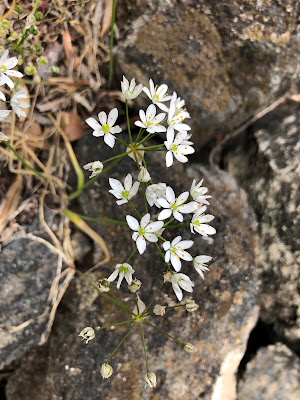







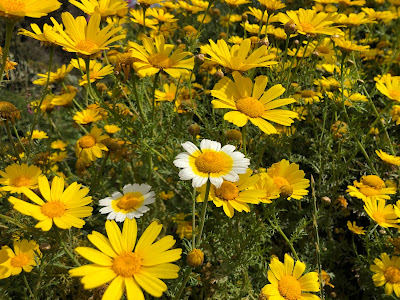


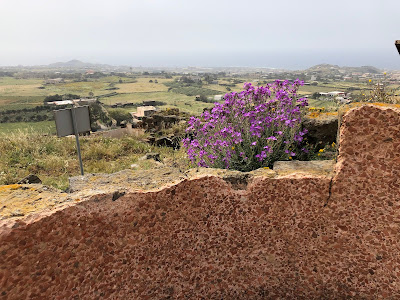

















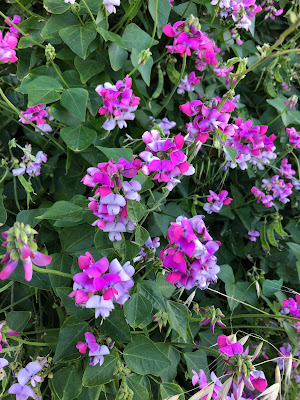


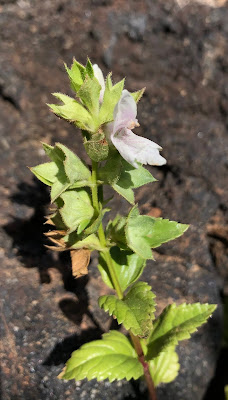







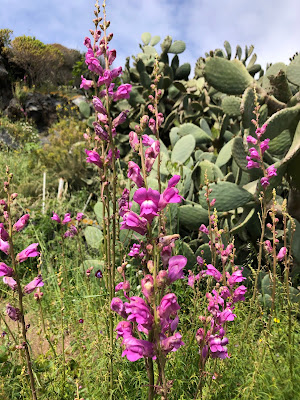
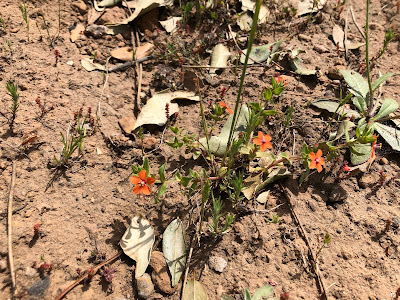







![[Aizoaceae] Carpobrotus acinaciformis - macro with bee. [Aizoaceae] Carpobrotus acinaciformis - macro with bee.](https://blogger.googleusercontent.com/img/b/R29vZ2xl/AVvXsEilADBzNKqdkmGedGitdKtvtz1rzKZlvMa7NgoeI1JA5YtYdo26uRkYSORB2GiMwgCsF1T9K0XTpSbEb1sABc6s9jZJZk_u8bSItftXa6956g4wbZwsWYYlZ4VkJiTJvJeOcAbx6mEZIB8/s400/%255BAizoaceae%255D+Carpobrotus+acinaciformis+-+macro+with+bee+.jpg)
![[Aizoaceae] Mesembryanthemum nodiflorum - macro. [Aizoaceae] Mesembryanthemum nodiflorum - macro.](https://blogger.googleusercontent.com/img/b/R29vZ2xl/AVvXsEhxpYeOMCqI_-hOZY0aemCMWxbsPpLq_mH4dOCkNA9Hu4vMNecPtjPccS9QXC-R7-0Dntl2PnPqjLrN_2B5v_6aFuMw5GOFiU0HncNgLXyVMsX46RhsbYt32OMZl77UCI1bZ2DSg3a6-d0/s400/%255BAizoaceae%255D+Mesembryanthemum+nodiflorum+-+macro.jpg)
![[Anarcardiaceae] Pistacia lentiscus - macro. [Anarcardiaceae] Pistacia lentiscus - macro.](https://blogger.googleusercontent.com/img/b/R29vZ2xl/AVvXsEjNJCKClS-iARnikwU02yc4desQVixL1dp3uLtVHvaNAqgwg2qadkZQkZuueQOYLsiuzsnizliyajeMFcazFfQSZZhI8XOofZ1E1M6sWR7F_D_mhRWhAyrpnjPx6XgwFy5cnoIjHCiiDUI/s400/%255BAnarcardiaceae%255D+Pistacia+lentiscus+-+macro.jpg)
![[Asteraceae] Helichyrsum italicum - macro. [Asteraceae] Helichyrsum italicum - macro.](https://blogger.googleusercontent.com/img/b/R29vZ2xl/AVvXsEitbuWZsAqIsNkd6ax6uJIlxAGqywkYwyHAvG8s6lfUxIky6mLJ79jxGQiE3zlz_JjQLyyBlPFJeqCyDw3WkGO2hIcPnPWnXCG4rpfKuW5eVzFk4M80VAr76fHji8O5dZuCksfTf4v-gI8/s400/%255BAsteraceae%255D+Helichyrsum+italicum+-+macro.jpg)
![[Asteraceae] Galactites sp - macro. [Asteraceae] Galactites sp - macro.](https://blogger.googleusercontent.com/img/b/R29vZ2xl/AVvXsEgCjcqV-x1P8eLWromkwp0jArPKXohuQ8UEQhfKzBpmy9DbfN8F9WRj5JqUAb1Hthz13oarFvuRqG1WEEL6jlhaou13fzWY05BP09_ETFEA0Sbx0okxGF35yyHcuIfF6M2t1ROqjO2NsXQ/s400/%255BAsteraceae%255D+Galactites+sp+-+macro2.jpg)
![[Asteraceae] Galactites sp - macro. [Asteraceae] Galactites sp - macro.](https://blogger.googleusercontent.com/img/b/R29vZ2xl/AVvXsEgdOMYn3gcRfPdO4n0gdeLp9_jGpWnkn-OkRt0y3wPB1Dho9yVpMx2Cv6YAwpkDmjfEYvMkWtbJre6fe_wABdMC_F48w4O8h_EfPbB9C4fttho1wLPZg0AOlBQBLPCO0fNYURiVIruWYG0/s400/%255BAsteraceae%255D+Galactites+sp+-+macro.jpg)
![[Boraginaceae] Echium - macro. [Boraginaceae] Echium - macro.](https://blogger.googleusercontent.com/img/b/R29vZ2xl/AVvXsEig6VUMTl7h_pkgw10jVTUG9PG4J_psbGuDcOziXPL_LchhBoK8h9bRpnMx309UHn1_yVEDwJD-4ZBrSgm5-jmbx98EmcyEuha9ZncO9_65V1ojoEAO1mqpbfJLQPs9mX0UMSj_Iqw96uE/s400/%255BBoraginaceae%255D+Echium+-+macro.jpg)
![[Cistaceae] Cistus salviifolius - macro. [Cistaceae] Cistus salviifolius - macro.](https://blogger.googleusercontent.com/img/b/R29vZ2xl/AVvXsEhcwj1F2NmEwvsaHZ8gC8orQmOvQZGQ89JUCFXu5X21dfkJT3XyvUNWvI8ZHVyGtsS4YZvIvL-sIP-MkvtUeh8Ci1ARnY4ZGWqwpihZG6ZXR3mveyuQzUH27yhViTWTb8caSFLd5h2dpnY/s400/%255BCistaceae%255D+Cistus+salviifolius+-+macro.jpg)
![[Cistaceae] Xolantha guttata - macro. [Cistaceae] Xolantha guttata - macro.](https://blogger.googleusercontent.com/img/b/R29vZ2xl/AVvXsEiemmfYA-3bQUoK9O-rV5EQbOQVa0c5ktkkYr8Wch48K66ybpxL_rC5RBUEgDOiFA1qLRHLVgld3skisJ6WBBwCZRAyUzSfKLjdXfhZFyAlsRJjmFt61pevh8806LBjnPY0SiJUyJMqDYo/s400/%255BCistaceae%255D+Xolantha+guttata+-+macro.jpg)
![[Crassulaceae] Sedum sp - macro. [Crassulaceae] Sedum sp - macro.](https://blogger.googleusercontent.com/img/b/R29vZ2xl/AVvXsEjo_zIsiyUpUn88BeNntmtBf2RQYWR_5pqCwQ7wREUhLW7P_9Cn_Zsj-fwnDrU9F7DI6AolNZP01mXzbnT6wLICeIy7LTYEQTBS6T75ac1qxH1CQfhfJGkUz0UfG4KLZ4d0X-qrAq134DM/s400/%255BCrassulaceae%255D+Sedum+sp+-+macro.jpg)
![[Fabaceae] Acacia saligna - macro. [Fabaceae] Acacia saligna - macro.](https://blogger.googleusercontent.com/img/b/R29vZ2xl/AVvXsEgWgssAubefBSpUoNWOP9CAQZIpGpXbBOrXrI7VNjkFXSGPvHxpA5FHDqWP7GD8wYhA9mCzdO_sVBh6QikJqnFtrPiUAdZdyxqD6Of7QuAlmUikOmpMc7NpObCor3Oy7V_EdB6cwQPtoSs/s400/%255BFabaceae%255D+Acacia+saligna+-+macro.jpg)
![[Cytinaceae] Cytinus hypocistis - macro. [Cytinaceae] Cytinus hypocistis - macro.](https://blogger.googleusercontent.com/img/b/R29vZ2xl/AVvXsEhuw8j2eoLzXLUPC3rpmmFoE3XDUNR77nNvEwJL8Shyphenhyphen5wYWwK0O1H3-lofEF92YjLCu2vkxk3g9qGYGq2yOVaeBvygELDqgKkdvCuTvMwrZMF8TLX0dYIwSP5E63w6pQalWdbyTEcmLYzQ/s400/%255BCytinaceae%255D+Cytinus+hypocistis+-+macro.jpg)
![[Euphorbiaceae] Euphorbia sp - macro. [Euphorbiaceae] Euphorbia sp - macro.](https://blogger.googleusercontent.com/img/b/R29vZ2xl/AVvXsEjUrWJIlasOs8VCVhhbDA95Mz357E6mrCIluecBHjWf3XrpE6YnL6D719GRypVO1g2IHAqs6rGTmHTOJbcLiEo2EIcXhKsuCMzHAvBy1WLeZ_gD0N8gSFSTvyHgMsIxl9hA2uI7HjADYLo/s400/%255BEuphorbiaceae%255D+Euphorbia+sp+-+macro.jpg)
![[Fabaceae] Lathyrus clymenum - macro. [Fabaceae] Lathyrus clymenum - macro.](https://blogger.googleusercontent.com/img/b/R29vZ2xl/AVvXsEhXmmwetoUrGBMkeubC_M-AgTxvqRtzpmuPPWppsHTVeiP6tMMh0OToS-6x0Y4W_Y19ki61236TodoGtaa-I8xug5gwsy7a-YLtdvf3IotVoWR7CBQ2DMq7rOCqwb7wznpA0WBrRHuStRw/s400/%255BFabaceae%255D+Lathyrus++clymenum+-+macro.jpg)
![[Fabaceae] possible Lotus genus - macro. [Fabaceae] possible Lotus genus - macro.](https://blogger.googleusercontent.com/img/b/R29vZ2xl/AVvXsEgNPGWchaCn1Bct8s7Axz5UqA7UeUfumM_Jiwm4VRE_7nPQucPk9Su48L-A10pt-RqKZOJQ-NOCobkd7J9rWvNQAyVAFdYC_E4PIArWdJEt58zhrFFSp9ZCWYfuYsdbpwSIJc8oybV2tIo/s400/%255BFabaceae%255D+possible+Lotus+genus+-+macro.jpg)
![[Fabaceae] Wisteria - macro. [Fabaceae] Wisteria - macro.](https://blogger.googleusercontent.com/img/b/R29vZ2xl/AVvXsEg8rGMzlQQ-3EWjghKZd8XqJdOKtkVvcFlrGBd_x1esP4J2G44195XSDKv1GCbM7y3CPTR1yCqCuhLc2eU6j9M8HUvmlDfMApbsslYgeiHL8prAyCBkpHUh4q4wlfpw_zMKaD8Yb7MN8n4/s400/%255BFabaceae%255D+Wisteria+-+macro.jpg)
![[Malvaceae] Lavatera arborea - macro. [Malvaceae] Lavatera arborea - macro.](https://blogger.googleusercontent.com/img/b/R29vZ2xl/AVvXsEhmLMtfmNIhF4DQDbC-_rxUG1DIzilYuhBMDRICrZMVg84KQCrbc1nKBUb8At_35IN770vqQqjuJSLBYd8mbNtD2P0Q_bA_Ofh1Q3VdLc6euRivQE8Wm6444aO7QoGoWdh_SLRYSEAs51k/s400/%255BMalvaceae%255D+Lavatera+arborea+-+macro.jpg)
![[Orchidaceae] Noetinea maculata - macro [Orchidaceae] Noetinea maculata - macro](https://blogger.googleusercontent.com/img/b/R29vZ2xl/AVvXsEgb4kZAgXeeFwOWFWR5dCQQXWy2bLhiVb3PHuEpZwaGvXqqc0Vi4XerIUDyZIRw5sZKdPVWDeZkcQQGNpRBPEfVXvEX0lzry_LutuFgILr0uLN3DcH_Hnsby8VUAzWjk6JNWI4kzNU3XKI/s400/%255BOrchidaceae%255D+Noetinea+maculata+-+macro.jpg)
![[Myrtaceae] Melaleuca macro. [Myrtaceae] Melaleuca macro.](https://blogger.googleusercontent.com/img/b/R29vZ2xl/AVvXsEjtSgJzgFvMwAQj6o0WbTcgY4Dk2IK3VfIbGO6wN89FVpUsttx5OlcEesW9TM7eYezELZyJdiPcppGo176L7VgZI3VxfCuO8P-ZgMhyphenhyphenRNCGz_UP5z90j6dET6mrmTno4UpQlgGUCg5Dh2w/s400/%255BMyrtaceae%255D+Melaleuca+macro1.jpg)
![[Myrtaceae] Melaleuca macro. [Myrtaceae] Melaleuca macro.](https://blogger.googleusercontent.com/img/b/R29vZ2xl/AVvXsEicKtntV2RIqlcIj9yzL_g8T6abyCAy4-wRo1lURooY4iLDXVwvDKbj1CBJfus11CyER8qkON7IW0osfni1VORkrxzQf1lxBrCqZESBx_vfv5sP-NU2O3x_Xp9xSf6t90hX_n2ApVX301Q/s400/%255BMyrtaceae%255D+Melaleuca+marco2.jpg)
![[Myrtaceae] Melaleuca macro. [Myrtaceae] Melaleuca macro.](https://blogger.googleusercontent.com/img/b/R29vZ2xl/AVvXsEjZdTDFeS_0s9IdlSNtNlT8XtfAC5wkXaOIGSkc5y2GTLNbz3umfjHcNCmXA8WA7dtOJ_vG3vnhsiQsvQ8oRsCwOKaRleP7U2o1YhFoyf7HsqDu-rbuoAUzTX02lF91jRDDlLPgtLylbbk/s400/%255BMyrtaceae%255D+Melaleuca+marco3.jpg)

![[Orobanchaceae] Orobanche alba - macro. [Orobanchaceae] Orobanche alba - macro.](https://blogger.googleusercontent.com/img/b/R29vZ2xl/AVvXsEh8a_h2VW0Js4aAENV-85mH-GkhSclsybR5QSZQ88uAERutUY7j0YK0Dq5RjBUaaUlT5zU9h1TBrvu3ueWxakXFgjTLvB8XdAo9X7_UZyHm0Foy8k4htWnmhP6IRjBvgfswmeantYYIoC4/s400/%255BOrobanchaceae%255D+Orobanche+alba+-+macro.jpg)

![[Primulaceae] Anagallis arvensis - macro. [Primulaceae] Anagallis arvensis - macro.](https://blogger.googleusercontent.com/img/b/R29vZ2xl/AVvXsEjOWBLqB3fKoojudSMdiE0vfS9DWx6CdGvWFRnqmC99fZAIcBP_2AZy-sV9Zc0b7sVxSmsrv5zZKHzzmlmjZ-4G6BYG3ALUpXPTFAGWOScL-jQ2NJsn7P206eJ9FO5qv3qlj8LMTyTvbe0/s400/%255BPrimulaceae%255D+Anagallis+arvensis+-+macro.jpg)
![[Primulaceae] Anagallis monelli - macro. [Primulaceae] Anagallis monelli - macro.](https://blogger.googleusercontent.com/img/b/R29vZ2xl/AVvXsEifWEQJvDlYiCV1dRRDx1hBJhj-fyRgA3Vzx2Y7vEXeYrtKY2738Ns3g0naADGIjFOGO8QrIO7Q1K4o9C8BdxMajWvoGtCTFw1cYXWqeH8IzSpLewFHHUSBbxaOKBJftzHBBm3eHc3tZmg/s400/%255BPrimulaceae%255D+Anagallis+monelli+-+macro.jpg)
No comments:
Post a Comment
All comments are moderated. If your comment doesn't appear right away, it was likely accepted. Check back in a day if you asked a question.